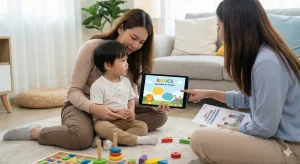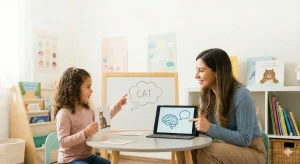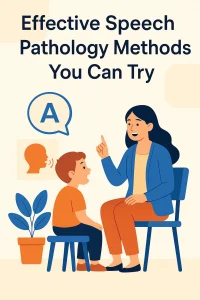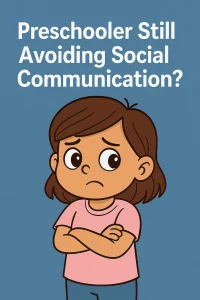Enhancing Therapy With Real-Time Feedback and Resource Sharing
By Akash Sinha
Last Updated: September 4, 2024
In the dynamic world of therapy, the integration of real-time feedback and resource sharing has revolutionized how services are delivered, enhancing both the effectiveness of therapy sessions and the overall client experience. Real-time feedback provides immediate insights and adjustments during therapy sessions, allowing therapists and clients to make instant connections and corrections. This immediacy helps tailor sessions to better fit the client’s needs and enhances the learning process.
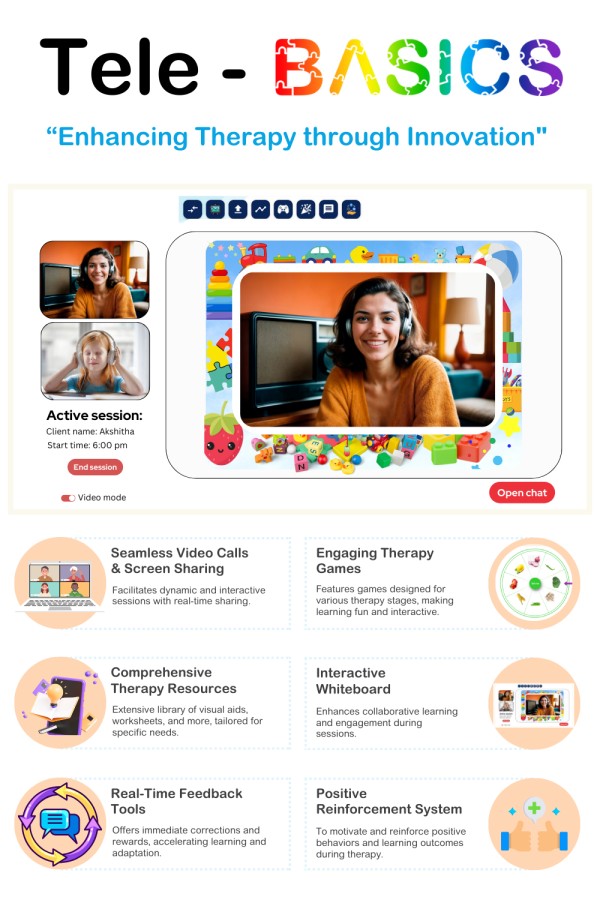
Simultaneously, resource sharing equips both therapists and clients with a toolkit of materials and interactive tools that extend the therapy beyond the traditional settings. Whether it’s through downloadable guides, interactive games, or comprehensive digital platforms, these resources ensure that therapy continues to be a part of the client’s daily routine, promoting consistent progress.
At Wellness Hub, we embrace these innovative approaches through our Tele-BASICS platform and other services. By combining real-time feedback with extensive resource sharing capabilities, we not only enhance the therapeutic process but also empower parents and therapists with the tools they need to support ongoing development. Our commitment to incorporating these elements ensures that every individual, regardless of their age or challenges, has access to the best therapeutic care possible, fulfilling our vision to help our clients become fully functional and thrive in their everyday lives.
The Value of Real-Time Feedback in Therapy
Real-time feedback is pivotal in the realm of therapy, especially when addressing developmental challenges in children or providing support in behavioral adjustments. This feedback mechanism allows therapists to observe and respond to clients’ reactions and behaviors instantly, making it an invaluable tool for tailoring therapy to individual needs.
For example, in a session focusing on speech therapy for children, real-time feedback helps the therapist correct pronunciations immediately, reinforcing learning at the moment. Similarly, in behavioral therapy, immediate feedback can help children understand the consequences of their actions directly, aiding in faster and more effective behavior modification.
Wellness Hub’s Tele-BASICS platform enhances these interactions by providing therapists with tools to offer feedback efficiently and engagingly. Whether through verbal cues or interactive games that give immediate responses to client inputs, our technology ensures that every session is optimized for maximum therapeutic impact.
By addressing the direct needs of our clients swiftly and effectively, real-time feedback not only speeds up the therapeutic process but also makes it more adaptable to the client’s evolving requirements. This approach is particularly beneficial for children and adolescents, whose development can be significantly influenced by timely and appropriate interventions.
Real-Time Feedback Techniques and Their Impacts
| Technique | Description | Impact on Therapy |
|---|---|---|
| Instant Correction | Therapists immediately correct errors in speech, behavior, or action during the therapy session. | Accelerates the learning process and helps in correcting habits effectively. |
| Verbal Affirmations | Providing positive reinforcement through verbal praise or acknowledgment immediately following a client’s action. | Boosts client confidence and reinforces positive behavior, encouraging further progress. |
| Visual Cues | Using visual signals or symbols to guide client behavior or responses during the session. | Enhances understanding and retention, particularly useful in speech and behavior therapy. |
| Mirroring Techniques | Therapists mimic client actions or emotions to provide immediate non-verbal feedback. | Helps in building rapport and empathy, allowing clients to recognize and reflect on their own behaviors. |
| Interactive Feedback | Using digital tools to provide feedback that clients can see, hear, or interact with in real-time. | Makes feedback more engaging and tangible, especially effective in keeping younger clients focused and active. |
Benefits of Resource Sharing in Therapy
Resource sharing in therapy encompasses a broad range of materials and tools designed to support and enhance the therapeutic process. These resources can include downloadable worksheets, educational videos, interactive applications, and a host of digital tools that clients can use both during sessions and in their everyday lives. For therapists, having a rich library of resources means they can offer personalized tools for each client’s unique needs, enhancing the overall effectiveness of the therapy.
The benefits of sharing these resources are multifold. Firstly, it allows for continuity in therapy. Clients can continue to practice skills and techniques learned during sessions at home, which reinforces learning and accelerates progress. For children in therapy, engaging with familiar materials can reduce anxiety and enhance their capacity to learn. Secondly, shared resources empower parents and caregivers to become active participants in the therapeutic process, providing them with the tools to effectively support their child’s development.
At Wellness Hub, we leverage our extensive digital library and Tele-BASICS platform to make a variety of resources easily accessible to both our therapists and the families they support. This approach not only streamlines the therapy process but also ensures that all parties have what they need to succeed, right at their fingertips.
Resource Types and Usage
| Resource Type | Description | Recommended Use |
|---|---|---|
| Downloadable Worksheets | Worksheets that can be printed or used digitally, focusing on specific therapy goals. | Use as homework to reinforce skills practiced during sessions, or as a tool for session activities. |
| Educational Videos | Videos that provide visual and auditory learning experiences, often explaining or demonstrating concepts. | Integrate into sessions to illustrate points clearly or assign as homework to reinforce learning. |
| Interactive Games | Digital games designed to target specific developmental skills or therapeutic areas. | Use during sessions to make learning fun and interactive, or recommend for home use to continue engagement. |
| Visual Aids | Tools that include flashcards, charts, and other visual materials to assist in understanding. | Utilize during sessions to aid comprehension or send home with clients for practice and reinforcement. |
| Digital Tools | Software and applications that provide therapeutic exercises and tracking. | Employ in sessions for real-time interaction and feedback, or instruct clients to use as part of their daily routine. |
Technological Advances Supporting Real-Time Feedback and Resource Sharing
In today’s digital age, technology plays a pivotal role in enabling and enhancing real-time feedback and resource sharing in therapy. Platforms like Tele-BASICS by Wellness Hub are at the forefront of this innovation, offering features that are specifically designed to support dynamic and effective therapy sessions.
Tele-BASICS integrates seamless video calling with interactive features such as screen sharing and synchronized activity play. This means that therapists can not only communicate face-to-face with their clients but also share screens to introduce interactive elements like games and exercises directly into the session. These games are not just for engagement; they are structured to provide therapeutic benefits, helping clients develop specific skills through play.
Moreover, Tele-BASICS allows therapists to share therapy resources in real-time. Whether it’s showing a video that models correct speech articulation or using flashcards within the session, the ability to share and interact with these resources makes therapy sessions more engaging and enriching. This technology ensures that no nuance is lost in digital translation, maintaining the quality and impact of each session.
By embracing these technological advances, Wellness Hub ensures that therapy is not just a service but a comprehensive, interactive experience that meets the high standards of modern healthcare. Our commitment to integrating the latest technology in our services reflects our dedication to providing unparalleled support to our clients and their families.
Read more: Transitioning from In-Person to Online Therapy: A Guide for Families
Guidelines for Therapists on Maximizing the Use of Real-Time Feedback
Real-time feedback is a powerful tool in the therapist’s arsenal, helping to guide therapy sessions towards more successful outcomes. Here are some practical tips for therapists on how to effectively integrate real-time feedback into their sessions:
- Be Observant and Responsive: Keep a close watch on the client’s reactions and behaviors during the session. The ability to notice subtle changes in expression or behavior can provide important clues to their feelings and understanding, allowing you to provide immediate feedback.
- Use Technology Effectively: Platforms like Wellness Hub’s Tele-BASICS make it easier to provide feedback through features such as interactive games and video analysis. Utilizing these tools can make your feedback more engaging and understandable, especially for younger clients.
- Establish Clear Goals: Set specific, measurable goals at the beginning of each session. This helps in providing focused feedback and ensures that both you and your client understand the objectives of the therapy.
- Encourage Client Interaction: Prompt your clients to ask questions and express their thoughts during the session. This two-way interaction fosters a more dynamic session and allows you to provide personalized feedback based on their input.
- Measure Progress Regularly: Use the session tools to record and track progress, which can be shared with the client. This not only motivates the client by showing them tangible results but also helps you adjust your strategies based on their improvement.
How Parents Can Support Resource Sharing at Home
Parents play a crucial role in reinforcing what is learned during therapy sessions. Here’s how they can effectively use shared resources at home to complement the therapeutic process:
- Create a Dedicated Learning Space: Set up a quiet, comfortable area in the home where therapy resources can be used without distractions. This helps the child associate this space with learning and therapy.
- Regularly Use Shared Resources: Engage with the resources provided by the therapist regularly. Whether it’s going through worksheets, playing educational games, or reviewing videos, consistent use of these materials can reinforce learning.
- Stay in Sync with Therapists: Keep in touch with your child’s therapist to stay updated on the latest resources and tools that can be used at home. This ensures that the therapy at home aligns with what is being taught during sessions.
- Provide Feedback to the Therapist: Share your observations about how your child interacts with the resources at home. This feedback can be invaluable for therapists to tailor future sessions and resources more effectively.
- Make It a Part of Daily Routine: Incorporate the use of therapy resources into the daily routine. This could mean setting aside time each day for activities related to therapy, making it a regular part of the child’s schedule.
By following these guidelines, therapists can maximize the effectiveness of real-time feedback, and parents can significantly enhance the impact of resource sharing at home. Together, these strategies help create a cohesive and supportive environment for therapy, leveraging Wellness Hub’s resources to their fullest potential.
Also Read: How Tele-BASICS Transforms Speech Therapy for Kids with Engaging Tools and Games
Table of Features: Tele-BASICS Platform
| Feature | Description | Benefits |
|---|---|---|
| Seamless Video Call with Screen Sharing | Enables therapists and clients to engage in face-to-face communication with the ability to share screens during the session. | Enhances interaction, allows for real-time resource sharing, and keeps the session engaging and dynamic. |
| Engaging Therapy Games | Includes a variety of games like flashcards, first words, phrases, and articulation games designed to support different stages of therapy. | Keeps clients, especially children, engaged and aids in skill development through fun and interactive means. |
| Comprehensive Therapy Resources | Access to an extensive library of visual aids, worksheets, and interactive materials grouped by therapy type. | Supports diverse learning styles and enhances the effectiveness of therapy by providing tailored resources. |
| Interactive Whiteboard | A digital canvas where therapists and clients can draw, write, and interact, enhancing the collaborative aspect of therapy. | Aids visual learning and allows for more interactive sessions. |
| Reinforcements and Tools | Tools like “Pop the Balloons” and animated rewards keep clients motivated and engaged throughout the therapy process. | Enhances client motivation and participation, making therapy sessions more enjoyable and effective. |
| Session Planner and Goals Setting | Allows therapists to plan sessions in advance, set tasks, and track progress with visual schedules and ratings for each activity. | Helps organize therapy sessions, enhances predictability, and facilitates effective progress tracking. |
The Future of Therapy: Trends and Predictions
As we navigate through an era where technology and healthcare increasingly intersect, the future of therapy looks more promising and integrated than ever before. Real-time feedback and resource sharing are already transforming therapeutic practices, making them more accessible, effective, and tailored to individual needs.
Emerging Trends:
- Augmented Reality (AR) and Virtual Reality (VR): These technologies are set to redefine experiential therapy by creating immersive environments that can simulate real-life scenarios or provide relaxation spaces, enhancing both cognitive-behavioral therapy and stress reduction techniques.
- Artificial Intelligence (AI) and Machine Learning: AI can help in analyzing session data to provide insights into client progress and predict outcomes, thereby enhancing the customization of therapy sessions.
- Wearable Technology: Devices that monitor physiological responses in real time could allow therapists to adjust their strategies based on immediate feedback regarding the client’s emotional and physical states.
Predictions for Technological Innovations:
- Integration of IoT with Therapy Platforms: The Internet of Things (IoT) could lead to smarter therapy environments where tools and devices are interconnected, providing seamless and continuous support to clients.
- Enhanced Data Security and Privacy: As digital therapy tools proliferate, advancements in data protection will be crucial to safeguard sensitive client information, ensuring trust and confidentiality in online therapy sessions.
These advancements promise to make therapy not just more comprehensive, but also more preemptive, with technologies enabling early identification of potential challenges and timely interventions.
Conclusion
Throughout this article, we’ve explored the significant roles that real-time feedback and resource sharing play in enhancing therapeutic practices. These techniques not only make therapy more responsive and engaging but also ensure that it is continuously evolving with the needs of those it serves. Wellness Hub remains at the forefront of these innovations, incorporating cutting-edge technology and comprehensive resources into our services, like the Tele-BASICS platform. We are dedicated to empowering therapists and supporting families in their journey towards holistic wellness.
As we look towards the future, the potential for further technological integration in therapy is vast and full of possibilities. At Wellness Hub, we are excited to continue pioneering these developments, offering advanced therapy techniques that promise greater outcomes and more empowered clients. We invite you to join us on this transformative journey, where every step forward is a step towards better mental health and well-being for all.
About The Author:
Akash Sinha (Co-founder, CTO)
B-Tech IIT Kanpur
Akash Sinha is the tech brain behind WellnessHub. He has dedicated his work to creating tools and web apps for amazing kids who might need a bit of extra support, like those with Autism or speech challenges.
Book your Free Consultation Today
Parent/Caregiver Info:
Client’s Details:
* Error Message
